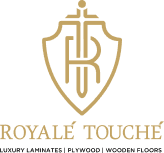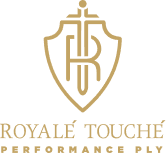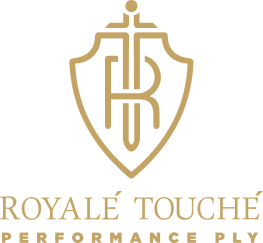

Understanding the Differences Between Pine Blockboard and Other Blockboards

September 16, 2024
Blockboards are a popular choice for furniture and interior applications due to their strength, durability, and cost-effectiveness. Among the various types available, Pine blockboard stands out for its unique characteristics. This blog aims to explore the differences between Pine block board and other blockboards, helping you make an informed choice for your next project.
What is a Blockboard?
Blockboard is a type of engineered wood product made from solid wood strips, known as blocks, sandwiched between layers of plywood. This construction provides a blockboard with excellent strength and resistance to warping, making it a preferred material for furniture, doors, and partitions.
Pine Blockboard: An Overview
Pine blockboard is made using Pine wood for the core blocks. Pine, a softwood, is known for its light weight, ease of workability, and aesthetic appeal. Here are some key features of Pine blockboard:
- Lightweight: Pine blockboard is lighter compared to blockboards made from hardwood cores. This makes it easier to handle and install, particularly for DIY projects.
- Aesthetic Appeal: Pine wood has a distinctive grain pattern and light color, which can enhance the visual appeal of furniture and interiors.
- Workability: Pine is a softwood, making it easier to cut, shape, and finish compared to hardwoods. This property is particularly beneficial for intricate designs and detailed work.
- Cost-Effective: Pine blockboard is generally more affordable than blockboards made from expensive hardwoods.
Other Types of Blockboards
Blockboards can also be made using various other types of wood for the core blocks. Here are some common alternatives to Pine blockboard:
Hardwood Blockboard
Hardwood blockboards use dense and durable hardwoods like Teak, Oak, or Mahogany for the core blocks. These blockboards are known for their superior strength and durability.
- Strength and Durability: Hardwood blockboards are exceptionally strong and can bear heavy loads, making them ideal for high-stress applications like shelves and worktops.
- Resistance to Wear and Tear: Hardwoods are naturally more resistant to scratches, dents, and other forms of damage, ensuring a longer lifespan for furniture made from hardwood blockboard.
- Heavier Weight: Due to the density of hardwoods, these blockboards are heavier than Pine blockboards, which can make them more challenging to handle and install.
Poplar Blockboard
Poplar blockboard is another popular choice, known for its balance between weight and strength.
- Moderate Weight: Poplar blockboard is heavier than Pine but lighter than hardwood blockboards, offering a middle ground in terms of ease of handling.
- Even Texture: Poplar wood has a fine, even texture that provides a smooth finish, making it suitable for applications where appearance matters.
- Cost: Poplar blockboards are generally more affordable than hardwood blockboards but might be slightly more expensive than Pine blockboards.
Fir Blockboard
Fir blockboard, made from Fir wood, is known for its strength and stability.
- Strength: Fir blockboard is strong and stable, making it suitable for structural applications.
- Workability: Similar to Pine, Fir is relatively easy to work with, allowing for detailed woodworking.
- Moderate Cost: Fir blockboard is reasonably priced, making it a cost-effective alternative to hardwood blockboards.
Key Differences Between Pine Blockboard and Other Blockboards
Weight and Handling:
- Pine Blockboard: Lightweight, easy to handle and install, ideal for DIY projects and applications where ease of handling is crucial.
- Hardwood Blockboard: Heavier, requires more effort to handle and install, suitable for high-stress applications.
- Poplar Blockboard: Moderately heavy, balancing ease of handling with strength.
- Fir Blockboard: Similar to Pine in terms of weight and handling ease.
Strength and Durability
- Pine Blockboard: Adequate strength for most furniture applications but may not be suitable for high-stress uses.
- Hardwood Blockboard: Superior strength and durability, ideal for heavy-duty applications.
- Poplar Blockboard: Offers a good balance of strength and weight, suitable for a wide range of applications.
- Fir Blockboard: Strong and stable, suitable for both structural and furniture applications.
Aesthetic Appeal
- Pine Blockboard: Light color and distinctive grain pattern, ideal for creating a natural, rustic look.
- Hardwood Blockboard: Rich colors and intricate grain patterns, suitable for high-end furniture and luxurious interiors.
- Poplar Blockboard: Smooth and even texture, good for a polished finish.
- Fir Blockboard: Natural appearance similar to Pine, with a slightly more uniform grain.
Cost
- Pine Blockboard: Generally the most affordable option, making it a cost-effective choice for budget-conscious projects.
- Hardwood Blockboard: More expensive due to the cost of hardwood, justified by superior strength and aesthetics.
- Poplar Blockboard: Moderately priced, offering a balance between cost and performance.
- Fir Blockboard: Reasonably priced, offering good value for strength and workability.
Applications of Pine Blockboard vs. Other Blockboards
Pine Blockboard
- Furniture: Ideal for lightweight furniture like cupboards, shelves, and tables.
- Partitions: Suitable for creating room dividers and lightweight partitions.
- DIY Projects: Easy to handle, making it perfect for DIY enthusiasts.
Hardwood Blockboard
- Heavy-Duty Furniture: Best for furniture that needs to bear heavy loads, such as worktops, benches, and cabinets.
- High-End Interiors: Ideal for luxurious interiors where aesthetics and durability are paramount.
Poplar Blockboard
- Versatile Applications: Suitable for a wide range of furniture and interior applications, balancing strength and weight.
- Decorative Items: Good for items that require a smooth finish and moderate strength.
Fir Blockboard
- Structural Applications: Suitable for use in structural elements where stability is important.
- General Furniture: Good for a variety of furniture applications due to its strength and workability.
Conclusion
Choosing the right blockboard depends on your specific needs and project requirements. Pine blockboard offers a lightweight, affordable, and aesthetically pleasing option for many applications. However, if you need greater strength and durability, hardwood blockboards or other alternatives like Poplar and Fir may be more suitable.
At Royale Touche Plywood, we offer a wide range of blockboards to meet diverse needs. Whether you're looking for the lightness and charm of Pine blockboard or the strength and luxury of hardwood blockboard, we have the perfect solution for your project.
